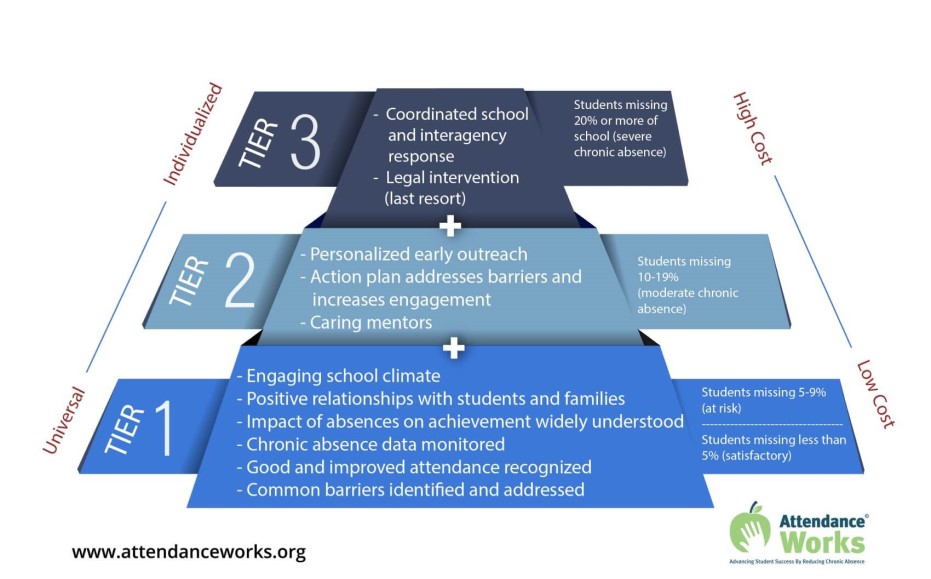What is the Elementary Success Mentor Strategy
The central components of an elementary success mentor strategy are a caring mentor, a principal led team that supports attendance efforts, and a whole school approach to family engagement which includes attendance messaging.
This strategy is effective because once a student is missing too much school, improving attendance requires changing a behavior or addressing a challenge. A positive, supportive, and on-going relationship with a caring adult at the school can help motivate attendance. Students and families are more likely to share the barriers they face to getting to school to an adult who meets with them regularly. In schools with large numbers of chronically absent students, it can be difficult for teachers and counselors to have the time to form these relationships with all of the students and families who would benefit. A success mentor initiative addresses this challenge by encouraging districts to use their data to identify where additional adults, for example other parents or community volunteers, might be engaged to serve as a positive point of contact for a student and their family.
The second component is a principal led team that coordinates a school’s approach to improving attendance and serves as an on-going source of support to success mentors. Success mentors need to be able to turn to such a team to connect their mentees to additional supports and to identify and address common challenges that might be affecting more than one student. Research shows that young people who were mentored set more ambitious educational goals and were more likely to go to college than their peers who did not have mentors. In The Mentoring Effect (2014), the surveyed youth offered that mentors helped them “stay on track in school, make good choices, and provide consistent support.”
The third key component is a whole school approach to family engagement and attendance messaging. Attendance improves when a school has a welcoming and engaging environment that promotes relationships with families and conveys the importance of being in class every day. Schools can use their interactions with families to help them realize how just missing two days a month can throw them off track for learning and success in school.
In a whole school approach, success mentors are an essential component of a comprehensive, tiered approach to improving chronic absence. This begins with prevention and positive messaging, and then offers early intervention before moving to more intensive case management coordinated with the legal system. As this diagram shows, success mentors are part of the second tier of response, which is focused on early intervention.

Implementation of success mentor programs depends upon the backing of school leaders, especially principals, who set the stage for ensuring attendance is seen as a top priority by the entire school. It also requires district support to ensure the work at school sites is supported by data, training, and community partnerships. As described in the section How Do We Get Started, appointing a captain who can take the lead in developing and launching the strategy is especially essential.
Differences from middle/high school models. While many key elements of a success mentor strategy are the same across grades, there are some key differences especially important when working among our youngest children, kindergarten through 2nd grade.